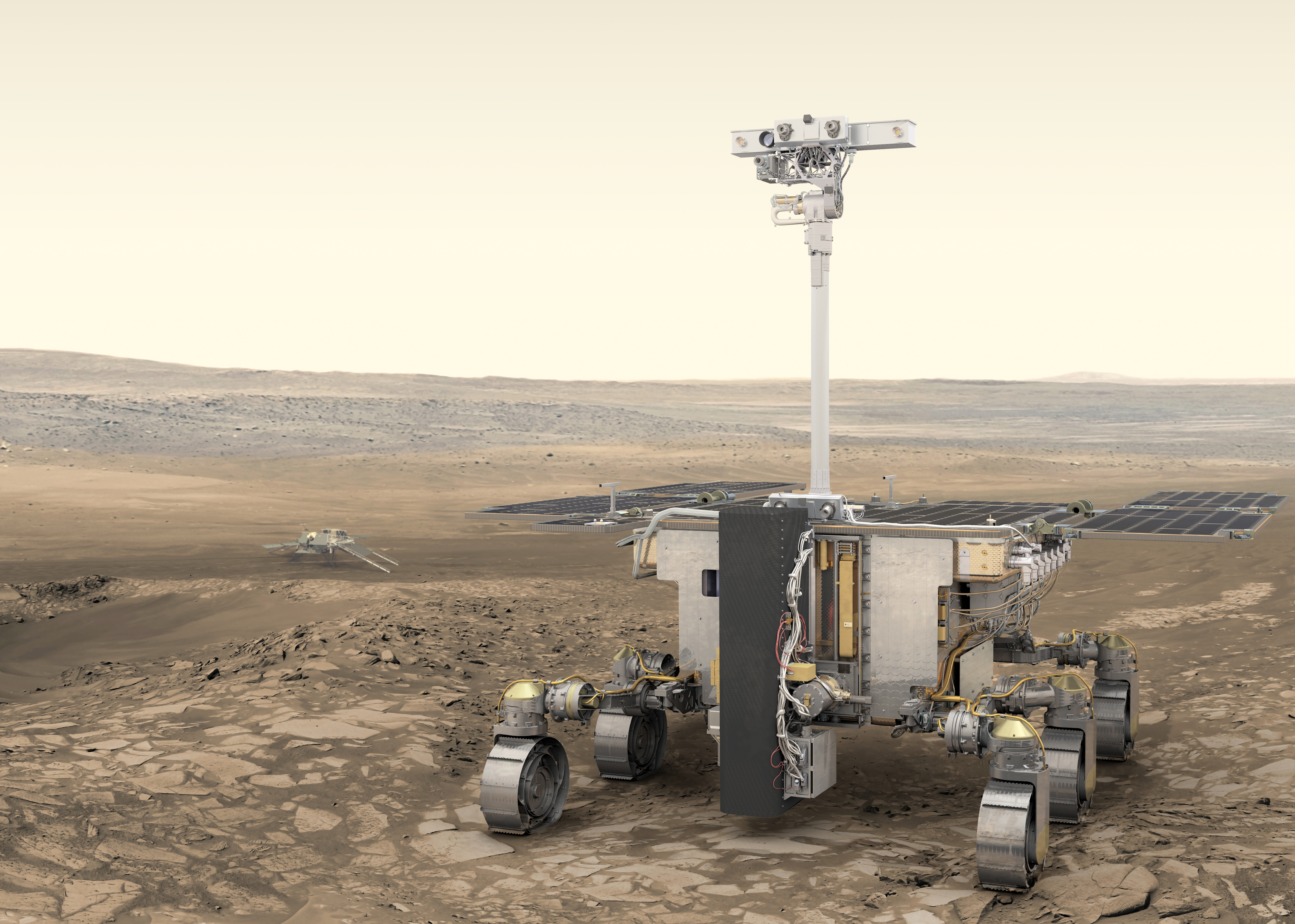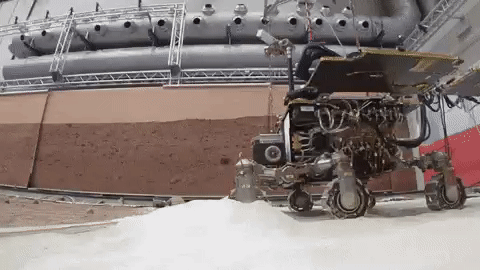European Space Agency suspends Mars rover launch on Russian rocket
The ExoMars rover's launch, already delayed from 2018, was scheduled for September 2022.

A European Mars rover built in partnership with Russia will not launch to the Red Planet this year as the European Space Agency suspends cooperation with its Russian counterpart in the wake of Russia's ongoing invasion of Ukraine.
European Space Agency (ESA) officials announced the decision Thursday (March 15) following a two-day meeting of representatives of the agency's 22 member states, all of which have imposed economic sanctions on Russia in response to its Ukraine invasion. Germany, the largest contributor to the ESA budget, suspended all science cooperation with Russia in late February.
Thursday's decision is a blow for the beleaguered ExoMars rover mission, which has been delayed since 2018 due to parachute issues. It was most recently scheduled to launch on a Russian Proton rocket in September. ESA officials said they are evaluating potential paths forward with the mission, now that it won't be launched by Roscosmos, Russia's federal space agency.
"Over the past two days, our Member States discussed the impact of the war in Ukraine on ESA's space programmes," ESA director general Joseph Aschbacher said on Twitter. "Together, we took a tough — but necessary — decision to suspend the launch of ExoMars foreseen for September with Roscosmos, and to study options for a way forward."
Related: Satellite images spot Russian artillery firing on Kyiv, Ukraine
The ExoMars rover, named Rosalind Franklin after the British chemist whose work was fundamental for decoding the structure of the DNA, is the second of two missions forming the ExoMars program. Designed to search for traces of life in the atmosphere of Mars but also (in the case of the rover) under the surface of the planet, the mission has been plagued with setbacks and delays for years
Originally conceived as a cooperation with NASA, the mission faced cancellation in 2012 after the American space agency withdrew from the project following budget cuts by the administration of then President Barack Obama. The Russian space agency Roscosmos stepped in at that time, helping to plug the hole left after NASA's departure.
Get the Space.com Newsletter
Breaking space news, the latest updates on rocket launches, skywatching events and more!
Roscosmos developed a landing platform for the rover and was supposed to launch the mission on its Proton rocket from the Baikonur Cosmodrome in Kazakhstan. The launch, originally scheduled for 2018, was postponed to 2020 due to problems with the landing parachutes, and later slipped to late September 2022

"ESA's ruling council, meeting in Paris on 16-17 March, assessed the situation arising from the war in Ukraine regarding ExoMars, and unanimously acknowledged the present impossibility of carrying out the ongoing cooperation with Roscosmos on the ExoMars rover mission with a launch in 2022," ESA said in a statement. "[The member states] mandated the ESA director general to take appropriate steps to suspend the cooperation activities accordingly [and] authorised the ESA Director General to carry out a fast-track industrial study to better define the available options for a way forward to implement the ExoMars rover mission."
It is not clear whether the mission could still use the Russia-built landing platform or whether any hardware would have to be rebuilt at extra cost to the space agency.
Russia previously ended its cooperation with the European spaceport in French Guiana as a response to the sanctions. Since 2011, the European launch provider Arianespace has been using Russia's mid-size Soyuz rocket to complement its heavy-lift Ariane 5 and the light-weight Vega launchers.
ESA is now assessing alternative launch options for four missions that were previously scheduled to launch on Soyuz, the agency said in the statement.
The International Space Station now remains the only active cooperation linking the two space agencies. Designed as a celebration of the post-Cold-War era spirit and deliberately built with the U.S.-led and Russian segments to be interdependent on each other, the cooperation can't be easily terminated.
"The International Space Station Programme continues to operate nominally," ESA said in the statement. "The main goal is to continue safe operations of the ISS, including maintaining the safety of the crew."
ESA astronaut Matthias Maurer is currently on the orbital outpost together with Russian cosmonauts Anton Shkaplerov and Pyotr Dubrov, and NASA astronauts Kayla Barron, Raja Chari, Mark Vande Hei and Thomas Marshburn.
Follow Tereza Pultarova on Twitter @TerezaPultarova. Follow us on Twitter @Spacedotcom and on Facebook.
Join our Space Forums to keep talking space on the latest missions, night sky and more! And if you have a news tip, correction or comment, let us know at: community@space.com.

Tereza is a London-based science and technology journalist, aspiring fiction writer and amateur gymnast. Originally from Prague, the Czech Republic, she spent the first seven years of her career working as a reporter, script-writer and presenter for various TV programmes of the Czech Public Service Television. She later took a career break to pursue further education and added a Master's in Science from the International Space University, France, to her Bachelor's in Journalism and Master's in Cultural Anthropology from Prague's Charles University. She worked as a reporter at the Engineering and Technology magazine, freelanced for a range of publications including Live Science, Space.com, Professional Engineering, Via Satellite and Space News and served as a maternity cover science editor at the European Space Agency.









